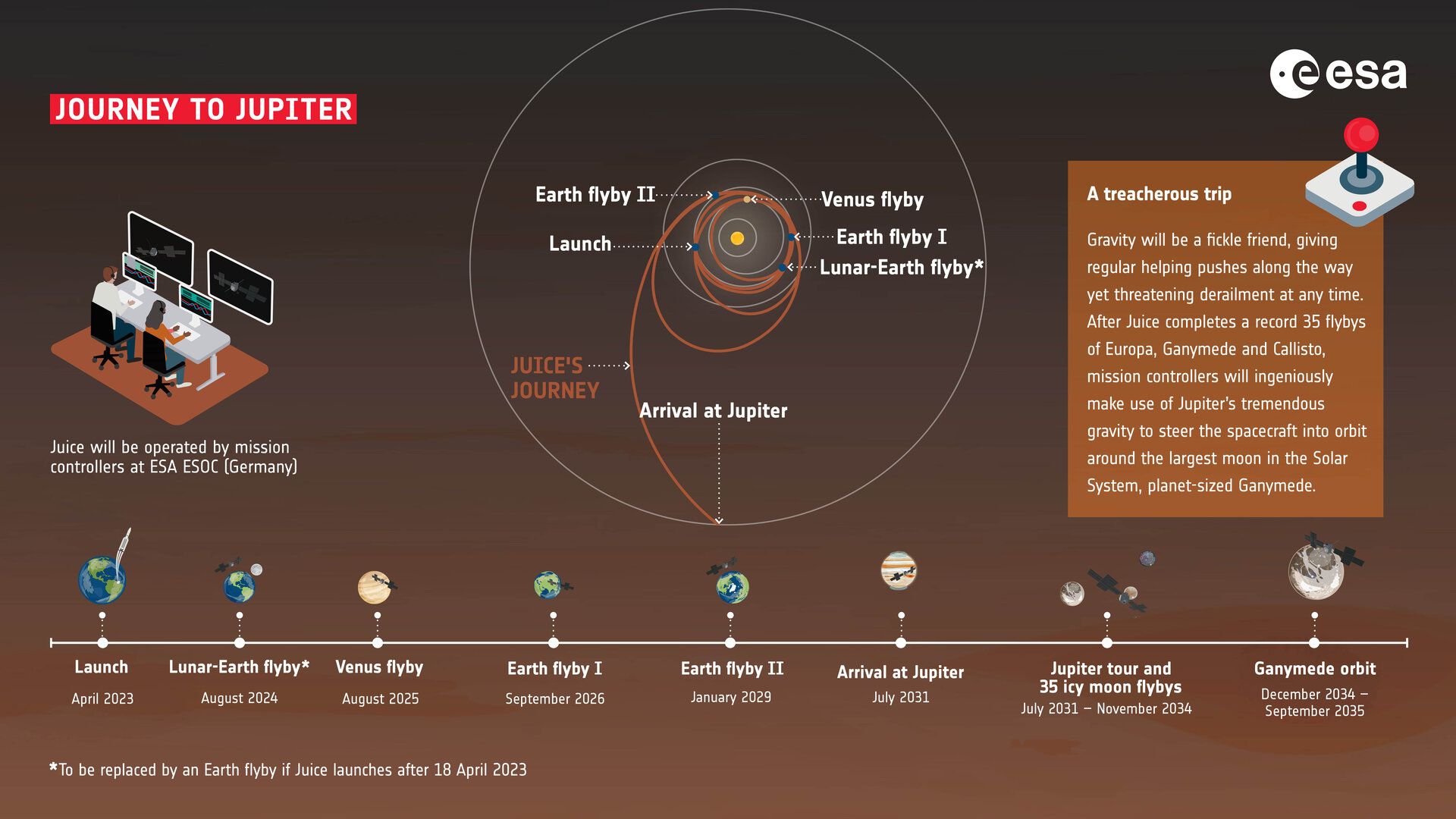The mission’s rocket, called Juice, doesn’t stop until it reaches Jupiter, where it will search for water on its moons.
The European Space Agency (ESA) has successfully launched the Ariane 5 rocket from its launch pad in French Guiana, with a truly ambitious mission: to search for water on Jupiter’s defined moons in the largest ESA project ever. Jupiter was discovered by Galileo Galilei in 1610, when his telescope was able to view some of its moons. Thanks to modern-day missions to Jupiter, scientists now know that three of these planet-sized moons (Europa, Ganymede, and Callisto) have an extraordinary amount of water beneath their surfaces, much more than the total amount of water in Earth’s oceans. The presence of water naturally raises one of the most important questions for mankind: whether traces of life can be detected in Jupiter’s orbit along with the water. The spacecraft will travel hundreds of millions of kilometers, powered by 27-meter-long solar panels with a total surface area of 85 square meters, and navigated by ESA’s deep-space antennas. Ariane 5 is expected to arrive at its destination in July 2031 and will orbit the moons for three and a half years, collecting data.

You can follow the Juice’s progress live on this link.
🛰️#ESAJuice is currently more than a million km from Earth.
— ESA Operations (@esaoperations) April 18, 2023
〰️It's far enough away that light now takes ~3.5 seconds to travel between us.
And yet, it's 8 years to the gas giant.
Wait in the @ESAJuiceBar🍹 for #DestinationJupiter, or use the interactive #WhereIsJuiceNow👇 https://t.co/Fp3Tp0FuWx
How was the European Space Agency created and what role do the countries of our region play in its operation? What are its next important missions? These are some of the questions answered in the latest issue of Hype&Hyper’s print magazine, which you can order here in the Hype&Hyper store.

Source and cover photo: ESA

Canteen #4—Breaded dishes

Ethereal and vivacious beauty—TITOK multivitamin celebrates its first birthday with the aesthetic world of Matti Varga










